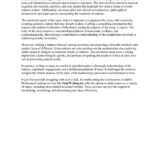The concept of animal welfare has evolved significantly over the centuries, marked by pivotal moments that laid the groundwork for today’s animal anti-cruelty laws. Understanding when these laws began, their historical context, and their overarching impact allows us to appreciate the progress made and challenges still faced in the quest for humane treatment of all creatures. This exploration covers a rich tapestry of legal developments, societal attitudes, and the persistent effort to enhance the lives of animals.
Animal anti-cruelty laws trace their origins back to the 19th century. The first documented animal protection law was enacted in the United Kingdom in 1822. This landmark legislation, known as the Martin’s Act, aimed to prevent the mistreatment of cattle and horses—common working animals of that era. The act represented a nascent recognition of animals as sentient beings deserving of legal protection. Throughout the 19th and early 20th centuries, advocacy efforts gained momentum, and more people began to understand the moral implications of animal suffering.
The inception of the American Society for the Prevention of Cruelty to Animals (ASPCA) in 1866 marked a significant milestone in the United States. Founded by Henry Bergh, the ASPCA was one of the first organizations dedicated to protecting animals from cruelty. Bergh’s fervor catalyzed the establishment of numerous local chapters across the nation, leading to the introduction of various anti-cruelty statutes at state levels. These laws primarily focused on domestic animals, particularly horses, which were essential for transportation and labor during that epoch.
By the late 1800s and early 1900s, public sentiment began shifting, fostering a broader understanding of animal rights and welfare. The early anti-cruelty laws were rudimentary, often lacking specific definitions and enforcement mechanisms. However, they served as the bedrock for subsequent regulations and inspired further advocacy and reform efforts. The movement for animal welfare began to intertwine with other social justice initiatives, exemplifying the interrelationship between humane treatment of animals and human rights.
As the 20th century unfolded, more comprehensive legislation emerged. The Animal Welfare Act (AWA) of 1966 was a landmark piece of legislation in the United States, establishing standards for the care and treatment of laboratory animals and pet animals in commercial trade. The AWA was instrumental in increasing public awareness regarding animal welfare, shaping societal norms, and creating a blueprint for further legislative progress.
Subsequent decades witnessed the emergence of state-specific anti-cruelty laws that tackled various forms of animal exploitation and neglect. These laws became increasingly sophisticated, encompassing provisions that addressed issues such as puppy mills, factory farming, and animal fighting. Enhanced penalties for animal abuse reflected a growing societal intolerance for cruelty, signifying a cultural shift towards empathy and ethical responsibility.
International developments also influenced the trajectory of anti-cruelty laws. Countries like Switzerland and Germany implemented stringent animal welfare regulations, often serving as models for other nations. The European Union adopted the Treaty of Amsterdam in 1997, which explicitly recognized animal welfare as a key consideration in policy formulation. This global perspective has propelled discussions about animal rights and welfare onto the international stage, fostering collaboration among nations to address these issues comprehensively.
The impact of animal anti-cruelty laws extends beyond legal frameworks. These laws have catalyzed a movement characterized by heightened awareness and community engagement. Educational programs, workshops, and campaigns spearheaded by animal advocacy organizations have promoted the ethical treatment of animals, contributing to a cultural paradigm shift in how society perceives and interacts with non-human beings. From increasing the visibility of puppy mills to advocating against cosmetic testing on animals, these efforts have sparked conversations and convictions that resonate with people around the world.
Moreover, advancements in social media have amplified the voices of animal advocates, enabling grassroots initiatives to reach broader audiences. A viral campaign can sway public opinion and compel legislative change, demonstrating the interconnectedness of digital activism and real-world consequences. This dynamic landscape exemplifies the importance of continued engagement and education in nurturing a compassionate society.
Despite the progress made, challenges endure. Enforcement of anti-cruelty laws varies significantly across regions, often hampered by inadequate resources or a lack of political will. In many areas, animal cruelty remains underreported, with victims voiceless and vulnerable. Additionally, loopholes within existing laws can undermine their effectiveness, necessitating vigilant advocacy for comprehensive legal reform.
The journey toward comprehensive animal anti-cruelty legislation is far from complete. The evolution of these laws reflects societal changes in values, ethics, and consciousness regarding animal welfare. As we critique past milestones and recognize contemporary achievements, we must also challenge ourselves to confront lingering issues and injustices. Collaborative partnerships among citizens, organizations, and policymakers are vital to ensuring that the rights and welfare of animals continue to be prioritized.
In conclusion, the historical trajectory of animal anti-cruelty laws emphasizes the importance of continual advocacy and reform. The foundation established by early legislation has evolved into a robust framework, yet the need for vigilance remains paramount. Collective responsibility, coupled with legislative action, can further advance the cause of animal welfare, fostering a society where all creatures coexist harmoniously and with dignity.







